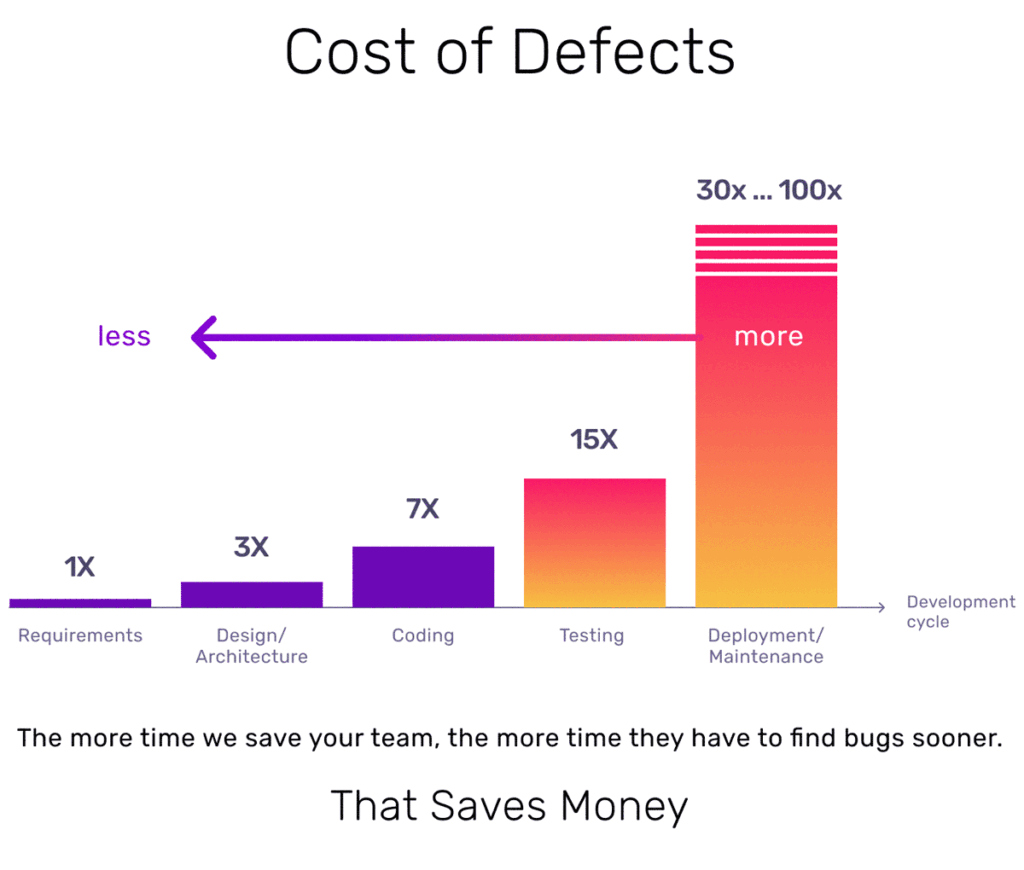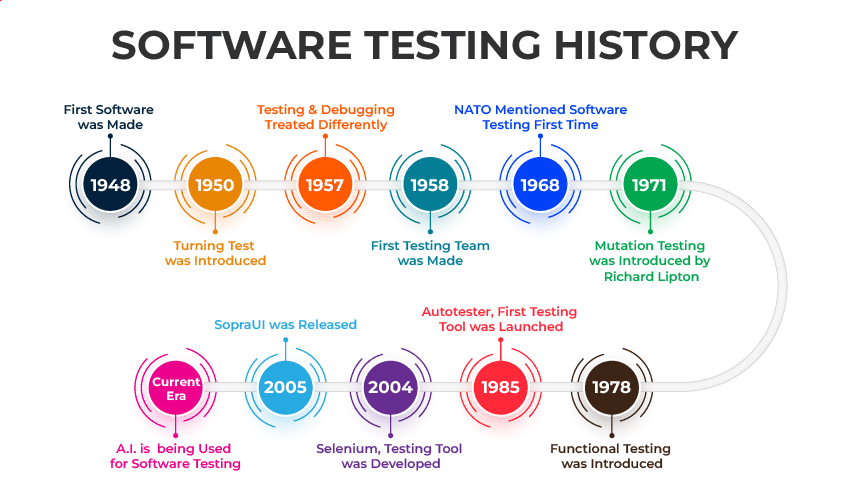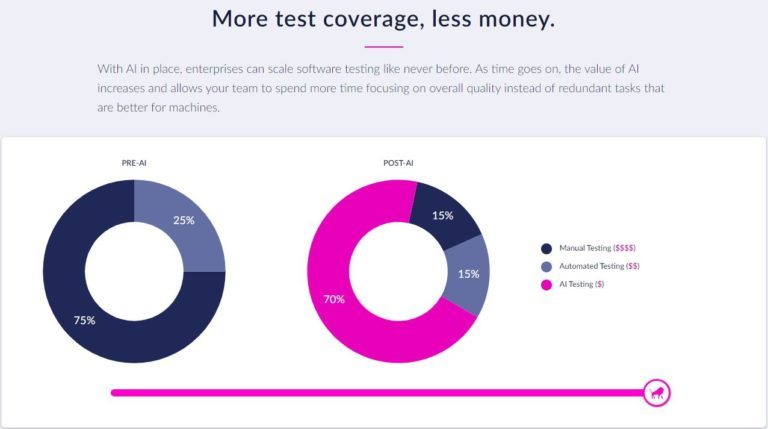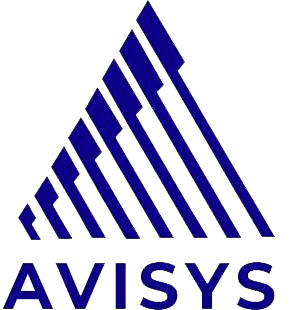Software testing is a meticulous process that plays a pivotal role in the software development lifecycle. It’s not just about finding bugs; it’s about ensuring that the software product or application aligns with the intended design and requirements. By conducting thorough testing, developers can ensure the software’s reliability, prevent potential bugs, reduce the overall costs associated with development, and enhance the software’s overall performance and most importantly, user experience.

The High Price of Software Defects
The consequences of software defects can range from minor inconveniences to catastrophic failures. For instance, a software glitch in Nissan’s system led to a massive recall of over a million cars. In another incident, a software error resulted in the failure of a $1.2 billion military satellite launch. These incidents underscore the critical importance of rigorous and managed software testing to prevent costly and sometimes dangerous errors.
While there’s an upfront cost to testing, investing in robust testing CoE framework and QA processes can save companies millions annually in development and support. Testing software early helps pinpoint issues before the product reaches the market. Prompt test feedback enables development teams to tackle concerns like:
- Architectural errors and inconsistencies
- Design errors
- Functional discrepancies
- Security risks
- Scalability challenges
Prioritizing ample time for testing enhances software dependability. As a result, applications launched have minimal errors, boosting their reliability. Delivering a system that matches or surpasses user expectations can result in increased sales and a larger market share.
Different Types of Software Tests
- Integration Testing: This focuses on the interfaces between different software modules. It’s about ensuring that integrated components or functions work seamlessly together, providing a unified user experience.
- Unit Testing: At the granular level, each individual component (or “unit”) of the software is tested. This ensures that individual parts of the application work in isolation.
- Functional Testing: Beyond just checking individual functions, this type of testing evaluates the software’s overall functionality. It ensures that the software behaves according to specified requirements.
- Performance Testing: This isn’t about finding bugs, but about ensuring the software works under the load and stress of many users. It evaluates the system’s speed, responsiveness, and stability under various conditions.
Case Study Download: How Avisys’ TCoE ensured Seamless Streaming for Thousands of Users for a Leading Video Streaming Platform
- Regression Testing: As software evolves, this testing ensures that new changes haven’t adversely affected existing features.
- Stress Testing: Here, the software is subjected to conditions beyond its operational requirements to see how and when it breaks, ensuring robustness under extreme conditions.
- Usability Testing: This is about the end user’s experience. It evaluates the software’s user-friendliness, ensuring that users can navigate and use the features efficiently.
- Acceptance Testing: This is the final phase of testing where the system is evaluated against the end user’s requirements. It ensures that the software meets the acceptance criteria and is ready for deployment.
Read also: Emerging Technologies in App Testing: What to Expect in 2024
Software Testing History
The journey of software testing parallels the evolution of software development. The first-ever software, developed by Tom Kilburn in 1948, was a rudimentary program, and debugging was the primary method of “testing.” However, as software grew more complex in the 1980s, the need for structured testing in real-world scenarios became evident. This era marked the beginning of a broader perspective on testing, leading to the inception of quality assurance or QA processes that became integral to the software development lifecycle.

In the 1990s, the focus shifted from mere testing to a holistic approach known as quality assurance. This approach encompassed the whole software development lifecycle, influencing planning, design, and the creation and execution of test cases, as well as support for ongoing tests and test environments. This evolution marked a significant advancement in testing, paving the way for refined methodologies, robust tools for test management, and automation solutions.
The Continuous Testing Revolution
Historically, software testing stood apart from the rest of the development process, often taking place later in the software development life cycle, sometimes just before the product’s market launch. Such late-stage testing often provided limited time to address defects, leading to either missed release dates or releases with pending bug fixes.
Integrating testing earlier in the cycle is beneficial as it ensures that testing isn’t merely an afterthought. It also makes defect resolution more cost-effective, given that issues are identified sooner.
Now, many teams are adopting a methodology termed ‘continuous testing’, which aligns with the DevOps ethos of collaboration throughout the product life cycle. This approach seeks to optimize software delivery speed while managing cost, quality, and risk. With continuous testing, teams aren’t restricted to testing post-build; they initiate testing processes earlier, identifying and rectifying defects when they’re simpler to address.
Optimizing Software Testing: Best Practices
Software testing entails several key steps such as setting up the test environment and framework, crafting test cases, scripting, evaluating results, and reporting defects.
For simple projects, manual or ad-hoc testing might suffice. But for more complex systems, automation tools become essential to streamline testing. These automated tests facilitate varied scenarios, enable testing of specific components (like shifting to a cloud environment), and expedite feedback loops.
While manual testing has its place, especially for nuanced and exploratory testing, automated testing is becoming increasingly vital, especially for large and complex systems. Automation offers speed, repeatability, and consistency. Modern testing tools, equipped with features like continuous testing, configuration management, and service virtualization, enable testers to simulate various scenarios, get rapid feedback, and ensure consistent results across testing cycles.

Effective testing encompasses the application programming interface (API), user interfaces, and overarching system dynamics. The earlier and more frequently tests are automated, the more advantageous it is. While some teams develop their test automation tools internally, many opt for vendor solutions that offer refined features, aiding in:
- Continuous Testing: This type of testing continually assess each new software build. This proactive approach hinges on test automation seamlessly integrated into the deployment workflow, facilitating early validations in real-world environments, enhancing design quality, and mitigating potential risks.
- Configuration Management: Centralized maintenance of test resources allows organizations to monitor which software versions are being tested. This gives teams access to essential assets like code, design specifics, models, scripts, and test outcomes. Reliable systems also incorporate user verification and audit trails, ensuring regulatory compliance with ease.
- Service Virtualization: In early development stages, ideal testing environments might be inaccessible. Service virtualization mimics unattainable or incomplete services and systems. This reduces dependency, enabling tests to commence sooner. Teams can adapt and deploy different configurations for varied scenarios without altering the base environment.
- Defect Tracking: Continual monitoring of software defects is crucial for both testers and developers to refine software quality. Modern automated tools enable teams to record defects, assess their extent and consequences, and identify correlated problems.
- Analytics and Reporting: Comprehensive reports and data analytics allow team collaboration on project status, objectives, and test insights. Cutting-edge tools integrate key project metrics and display them on interactive dashboards, offering a clear view of a project’s overall health and interrelations between testing, development, and other project facets.
Read also: What is Managed Testing Services? An Overview
Avisys Services: Leading the Way in Software Testing
Avisys Services stands as a beacon of innovation in the realm of managed software testing services. With our deep-rooted expertise and commitment to excellence, we offer a comprehensive suite of tools and managed testing services designed for the modern testing landscape:
- Avisys Testing CoE: Our Testing Center of Excellence (CoE) or TCoE is a testament to our dedication to quality and performance. It’s a harmonious blend of people, processes, and technology, ensuring that testing is managed in a standardized manner, eliminating inefficiencies and boosting quality assurance.
Read also: Avisys Testing CoE – An Intersection of People, Process and Technology
- Advanced Application Testing: We ensure top-notch application/software quality with proven managed testing services like non-functional testing, service-oriented architecture (SOA), mobile testing, and service virtualization.
- API Testing: Our automated API testing services ensure intelligent, secure, and robust API solutions, enhancing the functionality of web and mobile applications.
- Mobile Application QA: Our mobile-first assessment structure ensures functionality, usability, compatibility, application performance, and security for mobile applications.
- Usability Testing: We guarantee globally benchmarked application UX through our proven usability testing services.
- Emerging Technologies in App Testing: As we look forward to 2024, we’re excited about the potential of AI, ML, RPA, IoT, and Blockchain in reshaping the managed testing services landscape.
- Agile and DevOps: Embracing Agile POD engagement and DevOps methodologies, we ensure continuous testing throughout the development process, fostering collaboration and efficiency.
Our commitment to quality is evident in our results. With Avisys Services, businesses can expect reduced testing times, improved app quality, and a significant reduction in service disruptions. Our approach is not just about testing; it’s about ensuring that every application we test and certify meets the highest standards of quality, scalability, and flawless performance.
Takeaway
Software testing is more than just a procedural step in the development process; it’s a cornerstone of successful, dependable, and user-friendly software. It bridges the gap between the conceptual design and the real-world performance, ensuring that end users get the best experience possible. As software becomes more integrated into our daily lives and businesses, the importance of rigorous, intelligent, and forward-thinking testing methods cannot be overstated. Avisys Services is leading the way in this domain, bringing a wealth of experience and innovative solutions to the table.
Are you ready to elevate your software’s performance and user experience level? Get in touch with our managed software testing expert today to get started.



